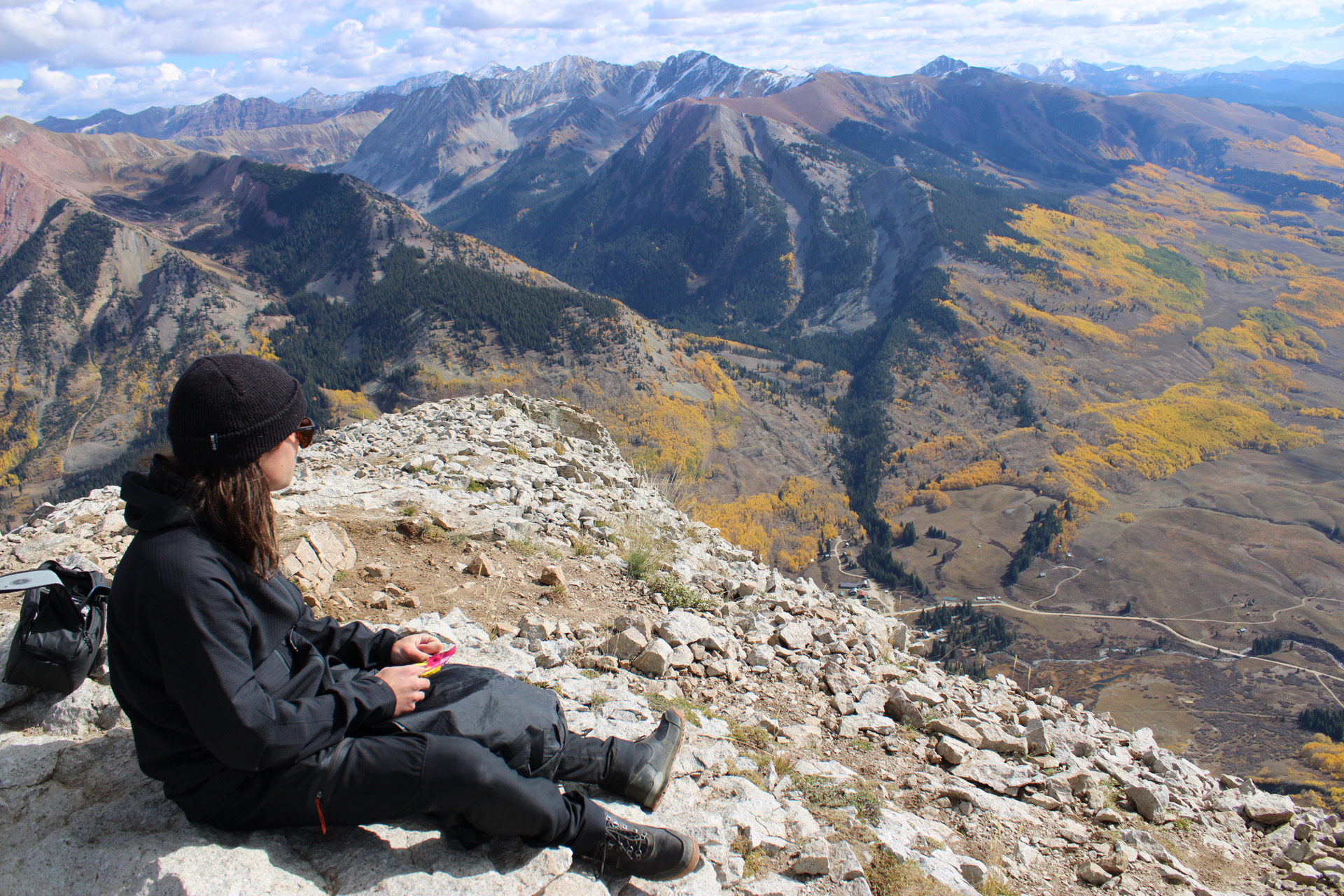
Intro
Most of our reviews are pretty long — and take a long time to produce — because we want to provide enough info for you to actually determine whether the gear we tested will work well for you.
But we get asked to check out an increasingly wide range of products, and sometimes, we just want to tell you about something we’ve been using and loving lately.
So that’s where this monthly series — Stuff We Like — comes in, where we keep you current on a broad range of stuff we’re currently digging.
And if there’s something you love that you think we ought to check out, drop us a note in the comment section below.
4FRNT Lot Chair
MSRP: $79
Luke Koppa: One necessity for me is a chair that’s relatively comfortable and that I can pretty easily just keep in my car or carry to a nearby lake, river, campsite, etc. I’ve historically just used a Crazy Creek, which I love for its simplicity, but there’s definitely a limit to the amount of comfort it can provide, and I’ve been really impressed by how comfortable chairs like the original Helinox Chair One are, while being similarly packable.

4FRNT’s Lot Chair is very obviously “inspired” by the original Helinox design, and in my experience, it functions just as well but at a lower price. I’ve used it way more than I would’ve guessed I would over the past couple of years, and it’s still working just as well as when I got it. I keep one in my car at all times and break it out all the time because of how quick it is to set up and how comfortable it is to sit in.
“Full-size camp chairs” like the REI Camp Extra Chair are still a bit more comfortable (and often feature cup holders), but mini ones like the 4FRNT Lot Chair pack down to less than half the size and weigh a whole lot less, making them way more suitable for sitting sessions that require a fair bit of hiking to get to. Plus, the Lot Chair is low enough that my roommate’s puppy can hop into it, and it’s quickly become her favorite chair, too.
Kristin Sinnott: I too have a 4FRNT Lot Chair and it lives in a bag in my vehicle, along with two of the original Helinox Chairs. My family and I take the chairs on every road, camping, and rafting trip and for concerts in the park. The Lot Chair takes a bit more time to set up than more simple (and bulkier) camp chairs but it’s still relatively fast. The Lot Chair is pretty low, so if you have bad knees or just prefer to sit higher up, I’d recommend looking elsewhere. But if you’re looking for a durable, lightweight and compact camp chair, the Lot Chair is a great option.
Artilect M-Intersect Doubleweave Jacket
MSRP: $240
Size Tested: Medium
Luke: Artilect started out primarily with high-end merino baselayers, but they’ve recently branched out into midlayers and outerwear, and I’ve been using their M-Intersect Doubleweave Jacket for the past few weeks. It’s a great example of the class of “hardface fleeces” — soft, lofted, gridded interior, but with a substantially tighter, denser, “harder” exterior.
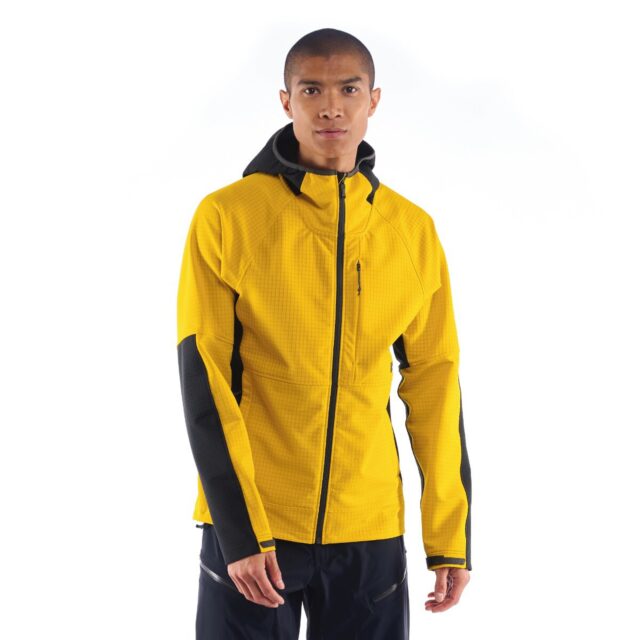
Many of us at Blister have become fans of pieces like this because they’re way more breathable than waterproof shells and still provide some of the warmth of traditional fleeces, but do a much better job of fending off some wind and precipitation than fleeces with more typical knits. The M-Intersect Doubleweave continues this trend; it’s a great “leave it on” layer for moving relatively high-output activities in cool and variable weather.
I’ve only used the Patagonia R1 TechFace (our reference “hardface” piece) a little bit, but so far the M-Intersect seems pretty similar in terms of fabric performance. It still left me pretty sweaty when working my way up a brutally steep hike in roughly 40°F temps, but I definitely would’ve been sweating even more in a windshell or fully waterproof jacket. I’m most curious to see how it handles wetter snow and rain, since its fibers feature the new GTT Empel water-repellant treatment, which reportedly bonds the water-repellant monomers to the fibers of the material at the molecular level. The claim is improved water resistance and longevity, with less environmental impact. So far, I haven’t gotten the piece into weather nasty enough to really test the claims, but I’m optimistic that it’ll at least be able to serve as the outer layer in moderate snow and maybe some light rain.
In terms of fit, I’d say the M-Intersect is fairly “regular,” though its arms are nicely long. It gives me plenty of room to toss a midlayer underneath, but it’s not so bulky that I can’t do the opposite and throw the midlayer over during sedentary periods of a day.
Overall, this seems like it’ll be a really versatile layer that I imagine will be making its way into several of my layering schemes this winter.
Therm-a-Rest Z Seat
MSRP: $21.95 – $24.95
Kristin Sinnott: Some things change as you get older, and for me, one of those things is the idea of having a comfortable and dry seat when hiking and camping. While I still don’t mind occasionally sitting on pointy rocks or wet ground, when I have the choice, I much prefer packing the Therm-a-Rest Z Seat.
The Z Seat folds down accordion-style and can be secured with a bungee and hook. I imagine it’s not the most compact hiking seat on the market, but it’s puncture proof, takes only a second to pack / unpack, is lightweight, and, most importantly, it’s comfortable.
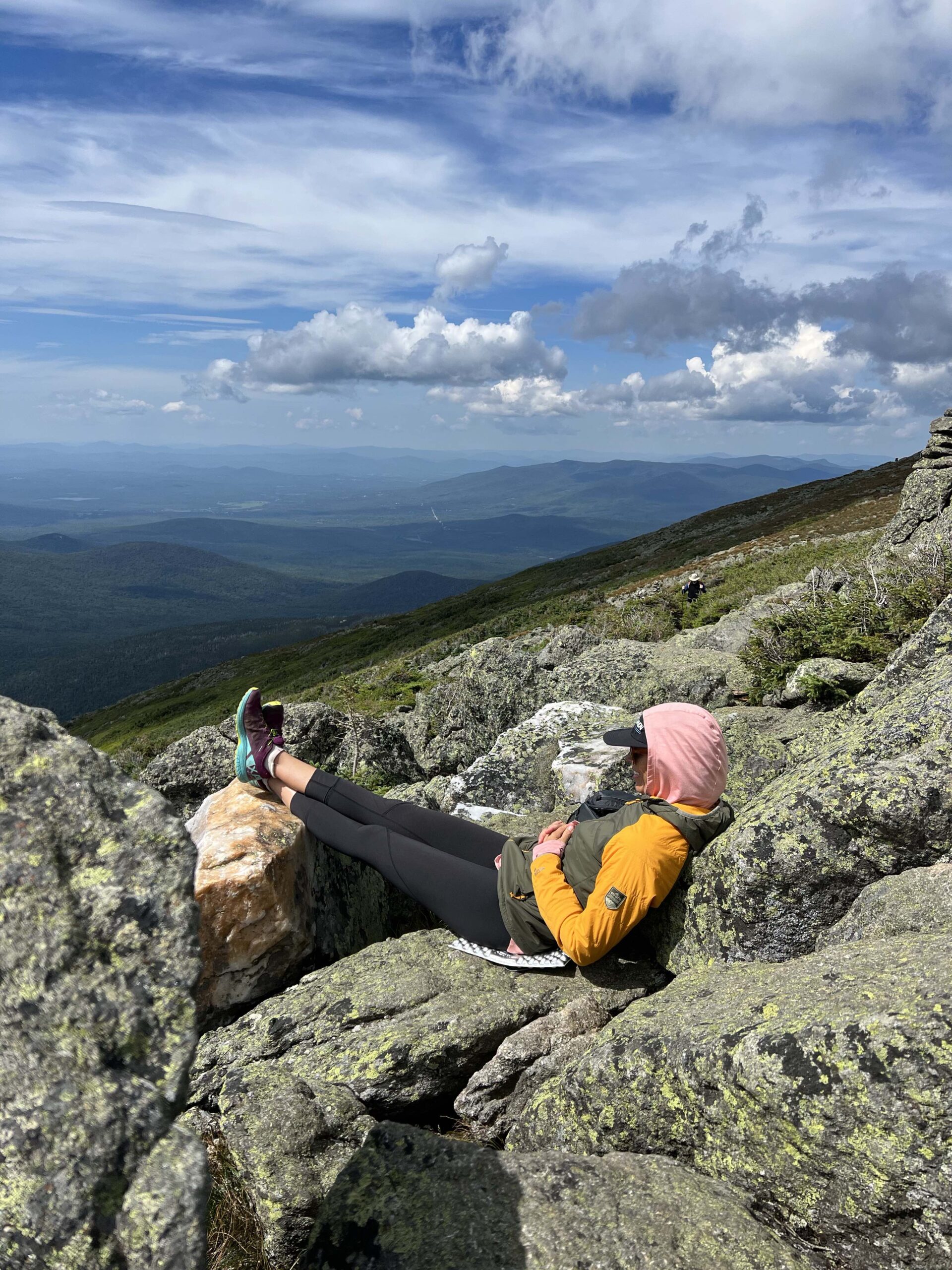
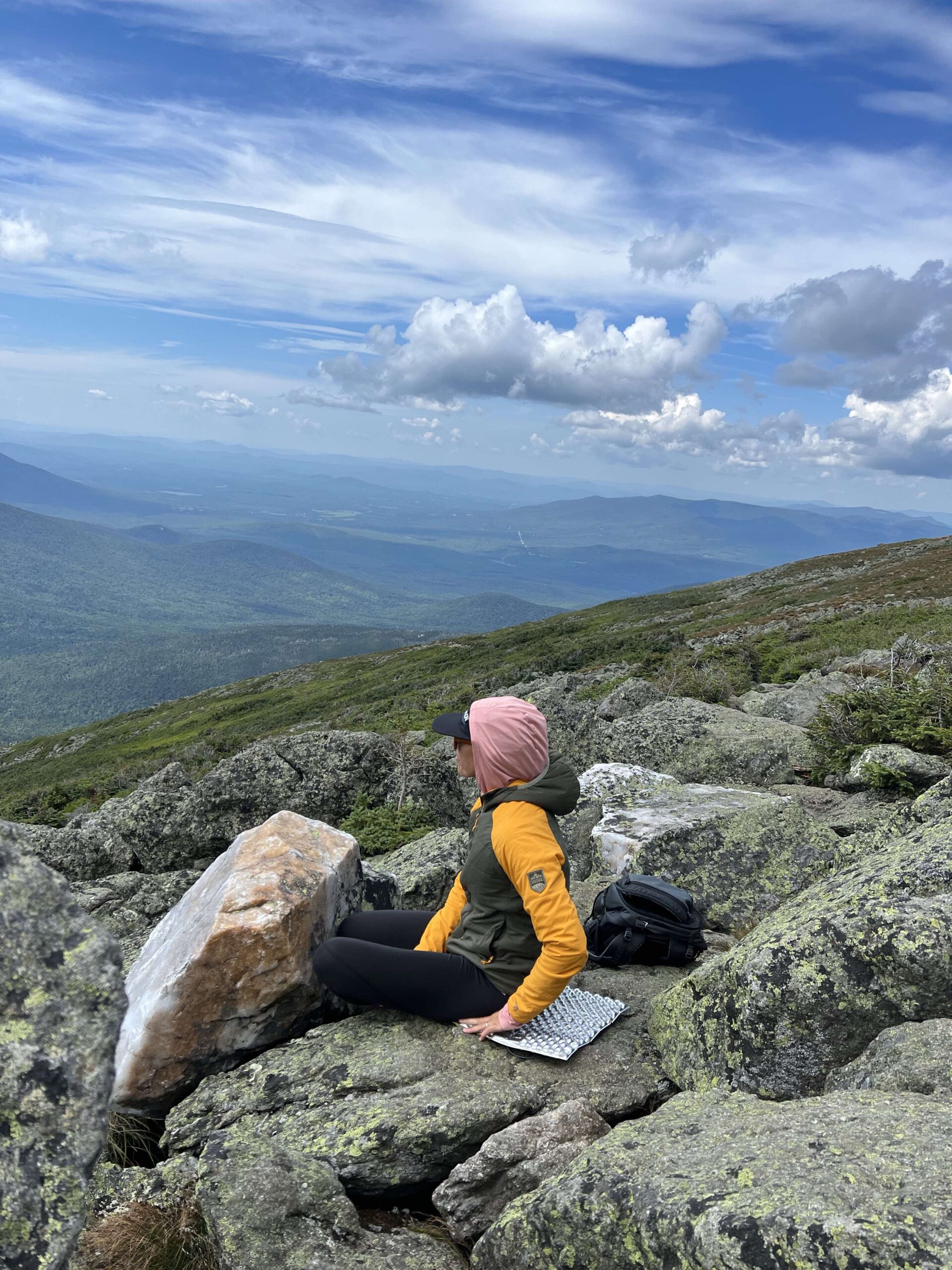
VHS 2.0 Slapper Tape
MSRP: $32
David Golay: I really like my personal Nicolai G1, and it’s served me well as a long-term component-testing bike, but the stock chainstay protection is awfully inadequate. The upside there is that it’s given me the opportunity to test a few different aftermarket solutions; having had good success with STFU Bike a while back, I’ve now been using Velocity Hucking Systems 2.0 Slapper Tape for most of this summer, and it’s also a good option.
In short, the VHS 2.0 Slapper Tape is slightly reminiscent of good old 3M 2228 mastic tape, which has long been a favorite for making homebrew chain slap protection, but in a wider width than the most common 1’’ version of 2228, and with in-molded hollow bumps, which provide a whole lot of extra cushioning to help keep things quiet. And compared to 2228, the VHS tape (get it?) is a bit softer-feeling and better cushioned, but also less prone to getting chewed up by chain slap.
Both the VHS tape and STFU have done a good job of quieting the copious chain slap I got with the G1’s underwhelming stock guard, though in the case of the VHS, I did need to use a little mastic tape on the underside of the seatstay as well; the remnant of the VHS tape that I had left over after trimming the main piece on the chainstay was long enough, but the chain sits too close to the seatstay to clear the bumps on the VHS tape.
That said, the VHS tape looks cleaner than the STFU Bike and doesn’t have the same potential to get twisted on the chainstay and wind up in the rear wheel. I didn’t ever put the STFU Bike all the way into the wheel during my time using it, but I have seen that happen on a friend’s bike. I also did need to make minor adjustments to its position a handful of times during my testing to stop it rubbing on the chain in certain gears.
And so while both systems work well, I think I personally prefer the VHS tape. It looks better, is going to be easier to install on most bikes (just make sure you remove the existing guards, if any, and clean the chainstay really well first), and it’s doing a great job of keeping things quiet. And while I’m a fan of black, VHS also offers the tape in a range of colors for a few dollars extra, if that’s more your jam.

Danner Trail 2650 Campo GTX
MSRP: $220
Blister’s Measured Weight: 1 lb 8.2 oz/pair (US Men’s size 10)
Jed Doane: Danner is a Portland brand known for its leather boots and shoes, but they also have a smaller technical line. The 2650 Campo GTX is a lightweight waterproof hiking option that has town-to-trail functionality and offers breathable performance in a comfortable, waterproof package.
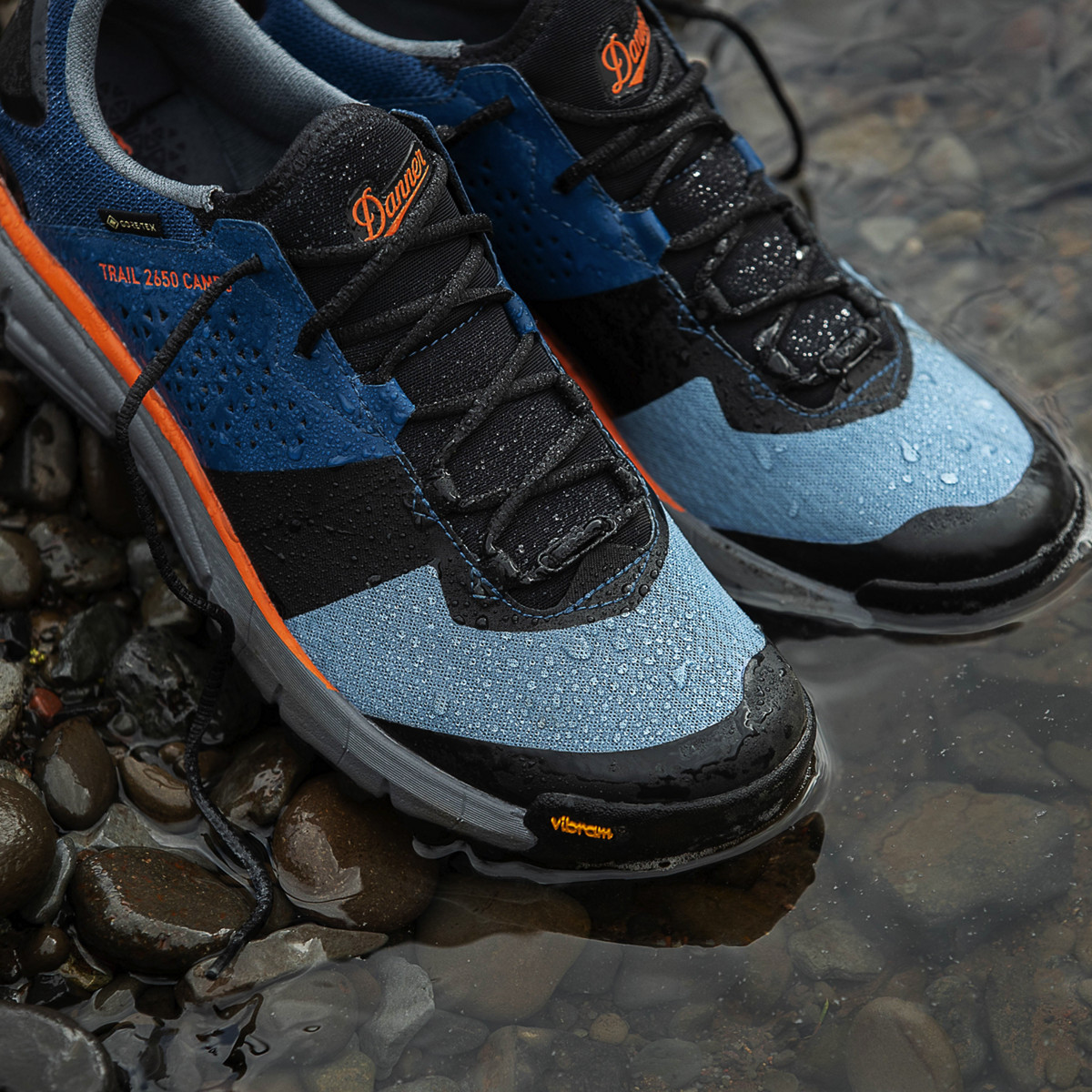
The 2650 Campo GTX proved to be a lightweight option when compared to other waterproof hiking shoes, and it’s versatile and breathable enough for short trail runs, too. The midsole is relatively thin and constructed of lightweight EVA, so rocks and roots are easy to feel underfoot, but in exchange, the 2650’s lightweight and slim profile is easy to move in — great for scrambling or variable terrain. The Vibram 460 outsole performed well on slick PNW beach rocks and wet scree fields, and the sole construction has proved durable so far. The sock-like design is a definite plus for the shoe, making it slightly harder to take on and off but with a markedly secure fit without the struggle of tongue slippage. The Gore-Tex membrane has as-expected waterproofing performance, and I found the hybrid mesh and leather upper to strike a good balance between durability and breathability. In wet PNW trail conditions, I found the 2650 Campo GTX to be considerably less stuffy than other waterproof hiking shoes I’ve used before.
The 2650 has also served as a great around-the-town shoe, with a versatile tread that’s not too much for pavement and mellow aesthetics that work for casual as well as mountain uses.
Overall, for a waterproof hiking shoe option, the Danner Trail 2650 Campo GTX strikes a great balance. I’d recommend it for those looking for a lightweight daily driver in wet conditions that still has considerable breathability.
Velocio Luxe Bib Short
MSRP: $279
Size Tested: Large
Kara Williard: I just spent 80 miles in a saddle that wasn’t mine, but it was hardly an issue because I was wearing the Velocio Luxe Bib Short. In fact, this is the first time that I didn’t really notice the bib at all — in the best way possible. The Velocio Luxe Bib Short totally disappeared, yet offered an incredibly substantial chamois that provided plenty of comfort for long days in the saddle. I am really excited to spend a whole lot more time in the bib, but in the meantime, here are some preliminary thoughts.
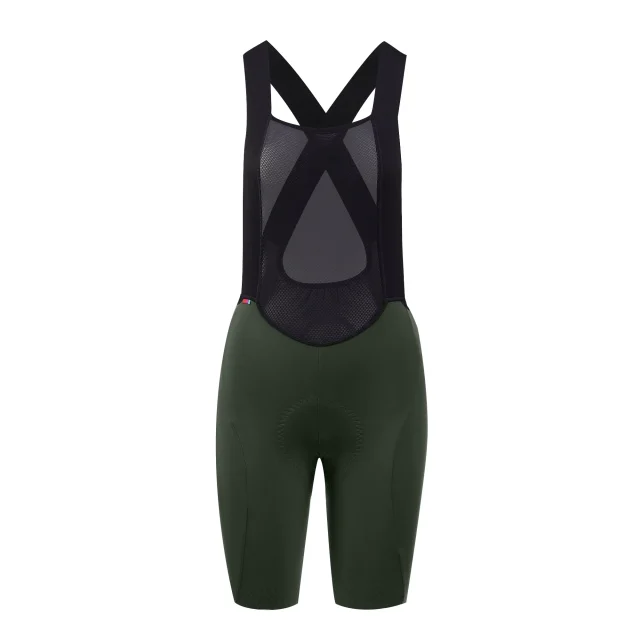
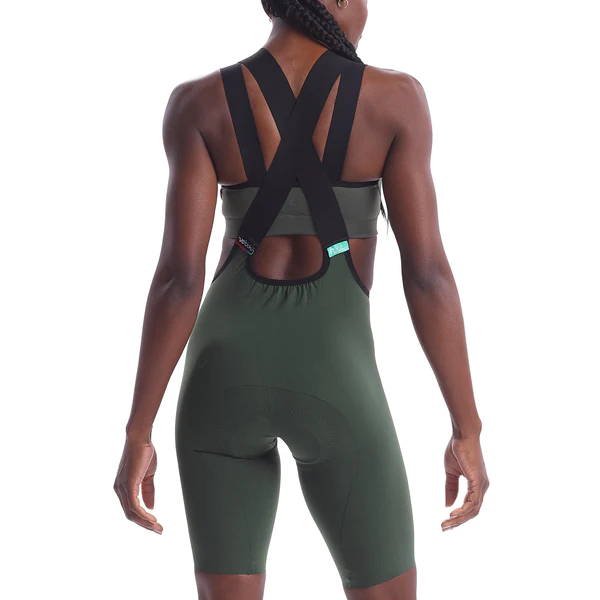
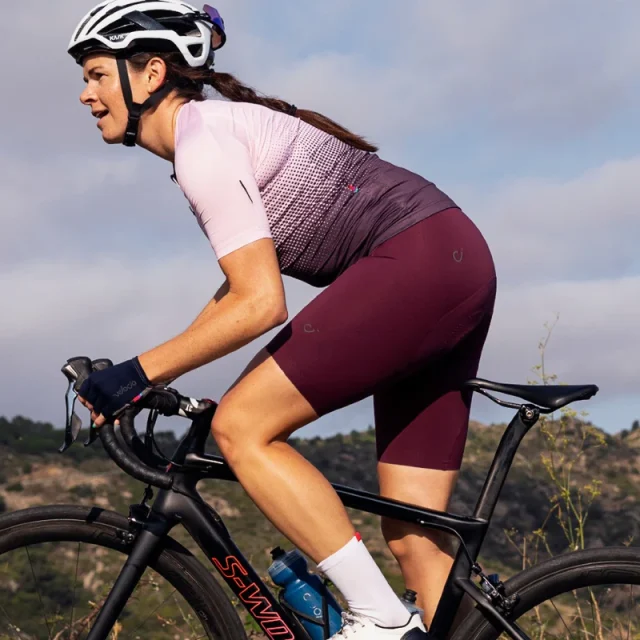
The Luxe Bib is certainly built with details in mind. I generally don’t choose bibs over a chamois short, but if I am going to, I definitely want one that feels non-constricting, comfortable, and snug-fitting. The Luxe Bib feels seamless, even though it’s not, and it provided a smooth, even fit without any annoying seams or rub points. Velocio left the leg cuff “raw,” which I think contributes to the feeling of comfort, as it doesn’t feel grabby around the leg as some of my better endurance chamois do. The Luxe Bib is also really good at staying in place while riding. The High Gauge Luxe fabric is really soft and smooth against the skin, but also feels quite durable and snag-resistant.
Even after entire days spent in the Luxe Bib, I was impressed by how little I noticed the shoulder straps, which, when paired with a comfortable sports bra, didn’t dig in or feel too tight against my shoulders. Velocio uses “Seamless Microfiber” on their bib straps and at the leg cuffs, helping both stay locked in place without feeling overly grippy like the uncomfortable silicone leg grippers bibs from other brands often use.
The upper part of the bib consists of a lightweight mesh that is highly breathable. This helps to eliminate any bulk, something I appreciated even on colder rides when trying to balance the right layering system while minimizing bulkiness / restricting any movement of my torso.
As far as sizing, the Luxe Bib is intended to be quite compressive, but Velocio has done this in a way that doesn’t feel constricting. I was very comfortable in a Large, despite how snug it was. The Luxe Bib is built with Velocio’s FlyFree system, which is intended to make it possible to pee without removing upper layers or having to unclasp anything. I have only used it a couple of times, but I was amazed at the ease of this system and how the stretchiness of the material made it possible to squat and pee without having to fully undress (which is the common case in most bibs). I also wasn’t worried about the integrity of the fabrics from having to stretch them so much.
Overall, for someone looking for a great bib for long days in the saddle, one that they don’t have to think about but will do its job effortlessly, the Luxe Bib is amazing. For those who are taken aback by the price point, it is first worth stating that Velocio goes to great lengths to create a long-lasting and durable product. But as a very worthy alternative, Velocio also has their “Renewed” program, which resells items that Velocio has restored to a “Like New” condition. Restored Luxe Bib shorts can be had at as low as $156.
Outdoor Vitals Ventus Hoodie
MSRP: $180
Size Tested: XS
Sascha Anastas: The Ventus Hoodie has quickly become my most coveted insulated technical layer due to its versatility, breathability, and warmth. Kara Williard also praised this Hoodie in Stuff We Like: August 2022. When I first came across this piece last winter, I found that it was the perfect layer to add under my ski shell as I tend to get pretty cold when wearing non-insulated jackets. Once spring came around and the temps warmed up, I wore it under by ski bibs as my only outer layer, and throughout the summer and fall, it was my go-to layer when riding my bike, including one fall day in which I wore it the entire day riding the downhill MTB park in Snowmass a few weeks ago. Suffice to say there was seldom a day these past six months that I did not have this ultra lightweight hoodie on hand.

While I was impressed with how warm it was, given its ultralight construction, its breathability was the thing that stood out to me most. The hoodie features a pretty substantial strip of mesh vents in the underarms. It uses a proprietary “3DeFX” insulation that reportedly consists of tiny microscopic coils that expand when the material heats up to allow for more breathability and then contract under cooler temps, offering more warmth. I certainly stayed plenty warm during colder conditions and was pretty stoked on how breathable the layer was when doing harder physical activity or in warmer temps.
An important note: there is only one mesh pocket hidden on the inside of the hoodie’s left front panel. At first, this took some getting used to; I wasn’t sure I was going to be a fan of so few pockets. But after a few wears, I really appreciated its sleek and simple fit and had no problem sneaking my mobile phone into this single pocket.
The fit is on the snug side of things, especially in the hips and lower torso area. For me this was preferable since I could easily tuck in the hoodie under my ski bib or when riding my bike, it didn’t feel too bulky under a waist back or backpack strap, and I could even tuck the hoodie into my everyday overalls. That said, for those looking for a baggier fit, I would recommend going up a full size. Bottom line here is that this jacket will remain in my closet for a long time to come (dare I say it might even replace my Arc’teryx Atom SL Insulated Hoodie that has been my close companion now for almost 7 years).
Velo Canteen
MSRP: $45
David: There are a lot of nice options for double-wall thermoses out there, but what sets the Velo Canteen apart is that it’s sized to fit in a standard bike bottle cage. And now that the weather has (finally) turned cold and wet up in the PNW, I’ve been glad to have an easier way to carry a warm beverage on rides. When it’s 40 degrees and drizzling, being able to have some hot coffee at the top of a climb before dropping in is pretty great, and the Velo Canteen is a great way to make that happen.
The insulation of the Velo Canteen is good, but maybe not as stellar as some other double-wall options that I’ve tried; that said, it’s also got a relatively large internal volume relative to its total size, which is important for fitting into a bottle cage while still being able to carry a decent amount of liquid. Given that, I think the tradeoff seems fair, but if you need the absolute most insulative option possible, this maybe isn’t it. But the Velo Canteen has kept coffee fairly warm, if not fully piping hot after ~3 hours in sub-50° F weather, so it’s still reasonably effective. And the Velo Canteen is short enough to fit into many frames that can’t accommodate an extended-length bottle (such as the Canyon Spectral 125, pictured).
The Velo Canteen holds 13.5 oz of liquid and features all stainless steel construction. Both a standard screw top (in stainless steel) and a plastic flip-top lid with an integrated straw are included. Currently, the Velo Canteen is available in a stainless steel finish only, but we’re told that more color options are on the way soon. Custom engraving is also available; contact Velo Canteen for more information and pricing.
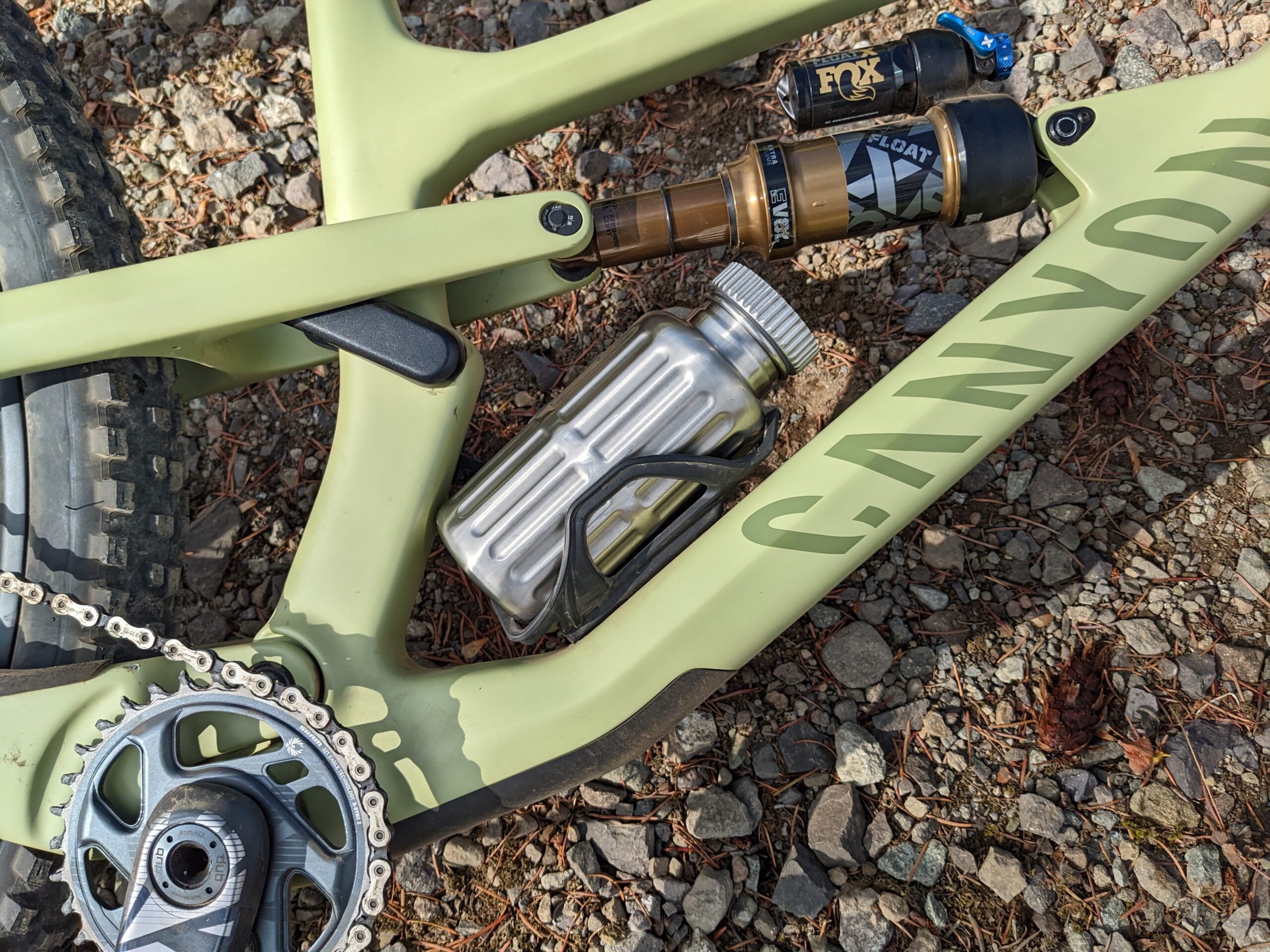
Black Diamond Revolt 350
MSRP: $64.95
Drew Kelly: With Fall comes short days, and so the pre- or post-work outdoor exercise sesh is often dogged by darkness, hence why we’ve been talking headlamps recently on Blister. My evenings have been filled with trail running and rock climbing, and the rush to get out after work before the encroaching night fully covers the valley often puts me on the back foot. While I’ve managed to remember my headlamp every evening this Fall, remembering to buy new batteries has been more of a challenge. Well, Black Diamond’s Revolt 350 has provided some relief.
While it comes with a rechargeable lithium-ion battery, the Revolt 350 is also compatible with three triple A’s, which means you get two battery spans for half the effort required to remember to charge or buy more batteries. That has made my life a lot easier this time of year.
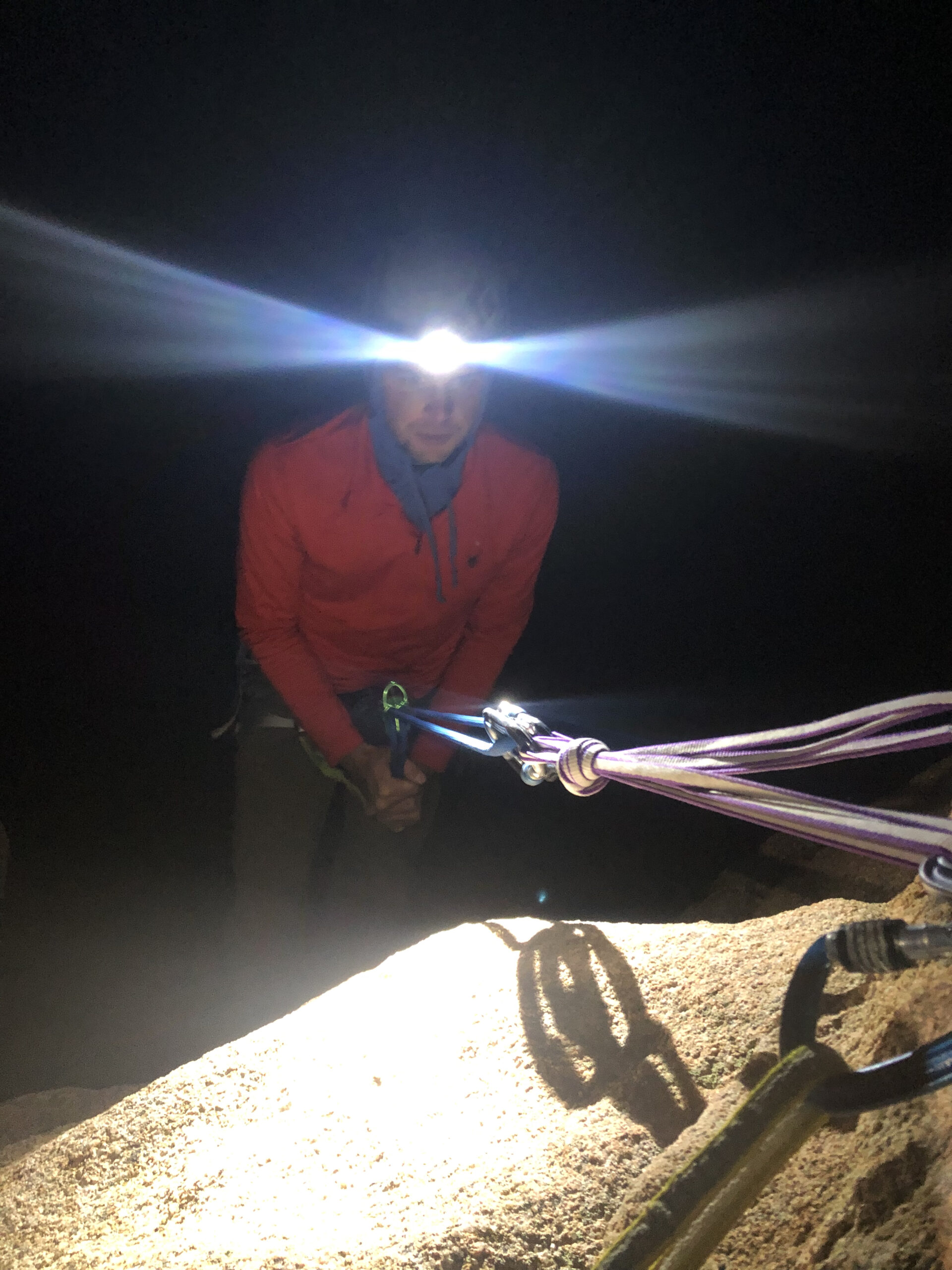
But the ability to switch “fuels” has also come in handy on overnight ski touring and climbing outings, where only having the rechargeable battery would limit the headlamp’s burn time to a single charge. So essentially, you get the benefits of a rechargeable headlamp in conjunction with the battery life of a battery-operated model. And as a bonus, there is a small LED battery meter so that you’re not left guessing how much time you’ve got left before tripping on a rock in the dark.
I will say that there is a learning curve to BD’s headlamp button configuration — but take two minutes to read the manual (as I eventually did…), and it ends up being pretty intuitive. The Revolt 350 has wide field, spot, red, and strobe modes, and allows you to dim each accordingly. Perhaps the feature I love most is the lock mechanism, which prevents the gut-punching realization that the headlamp has turned on in your pack and is now almost dead.
Some people may find the Revolt 350 a little bulky to run with in comparison to some other headlamps, but it hasn’t bothered me for moderately paced trail running over some technical terrain. And at 350 lumens for its max-output setting, it emits more than enough light for both running and climbing endeavors, so I usually dim it a little bit to enable a longer battery life.
Edgevale Cast Iron Sierra Pant
MSRP: $159
Size Tested: 32 x 30
Matt Mitchell: I recently posed the question, “How many pairs of pants should an adult man own?” to a group of friends, sarcastically but with a bashful undertone of genuine curiosity. Having forsaken pants for most of the pandemic, I’ve seemed to have lost touch with their role in my wardrobe. The fact that washing denim is forbidden (at least for raw fabrics), for whatever reason, implies you’re set for life with a pair of jeans, right? Maybe supplement them with some sweatpants and call it good? The answers to my original question varied in number, with the mean averaging out to no less than 6, a value I vehemently disagreed with (and said as much).
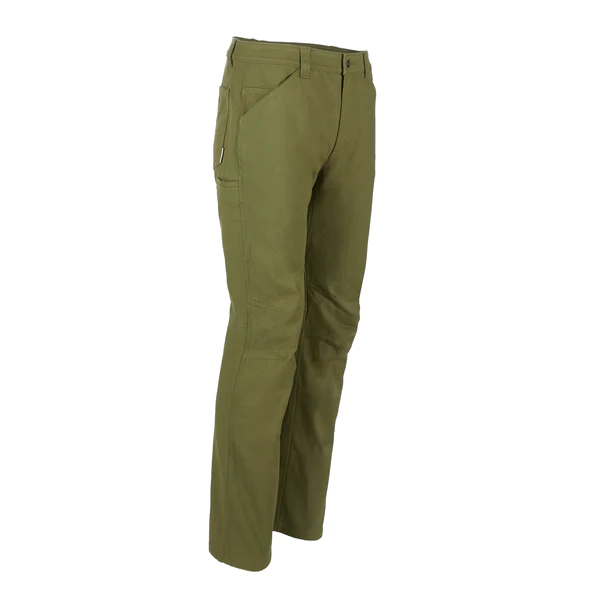
After much thought and deliberation over the last few weeks, I’ve decided to be an adult man that owns three pairs of pants. Call it an act of heroism, blind ignorance, a death wish, what have you, three is the number for me. Much of what led me to this decision (people have called it “brave”) has been my experience with the Cast Iron Sierra Pant from Edgevale, a modern, athletic take on the classic do-it-all workwear staple popularized by the likes of Carharrt and Filson. Made from the brand’s proprietary “Cast Iron” fabric, a cotton / “Cordura Nylon” / polyurethane blend designed to be at once technical, durable, and flexible, the Sierras provide protection without compromising freedom of movement for active folks. The pant’s 4-way stretch Cast Iron fabric works in conjunction with a fully articulated leg shape, crotch gusset, and a curved waistband to allow for full range of motion when squatting, hiking, or any position you might find yourself in, short of doing the splits.
I’ll be the first to admit that my hands are not those of a working man’s; there’s not a callus to be found, and my palms, when not sweaty from typing, are double-ply toilet paper soft. Wearing a pair of burly work pants to plant my rear-end in front of a computer all day might seem distasteful, like valor stolen from people with much more physical jobs, but the Sierras’ functionality translates to desk work just as well. Deep front and back pockets are spacious enough for just about any everyday carry (EDC), which for me includes an overfilled wallet, mechanical pencil, keys, and the odd stick of gum. The left front pocket also has a smaller utility patch where I keep my knife (mostly for show, who are we kidding), while my phone spends most of its time holstered in the pants’ quick-draw pocket by the right hip.
The Sierras’ fit, which Edgevale characterizes as “Straight through the thigh, hip, and seat with a gradual taper from the knee down,” is loose enough to accommodate all of their on-board storage without billowing out too much, remaining quite stylish, in my opinion. Their tapered bottom half means they can be worn with regular shoes, not just boots, though they’ll work well with your steel-toes too. As a “short king” (I say I’m 5’9 on dating apps but we all know that measurement was taken with shoes on), the 32 x 30 I received was pretty standard for that size, requiring a slight ankle cuff for my preferences. Next to my sweatpants and jeans, I’m betting on the Edgevale Cast Iron Sierra Pant to last me quite a while.
Tailwind Endurance Fuel
MSRP: $38.99 (50 servings)
Kara: I know Matt Mitchell recently talked about Tailwind’s Active Hydration Mix in the Stuff We Like: August 2022. There’s also a lot more to learn about Tailwind in Ep. 130 of Off the Couch, where Matt talked to the co-founder. But as a long-time user of Tailwind, and as someone who recently saw just how powerful the stuff can be on endurance rides, I wanted to chime in and talk about Tailwind’s Endurance Fuel. I recently just completed a 100-mile ride on the White Rim and it was the first time where liquid calories really made a difference for me.
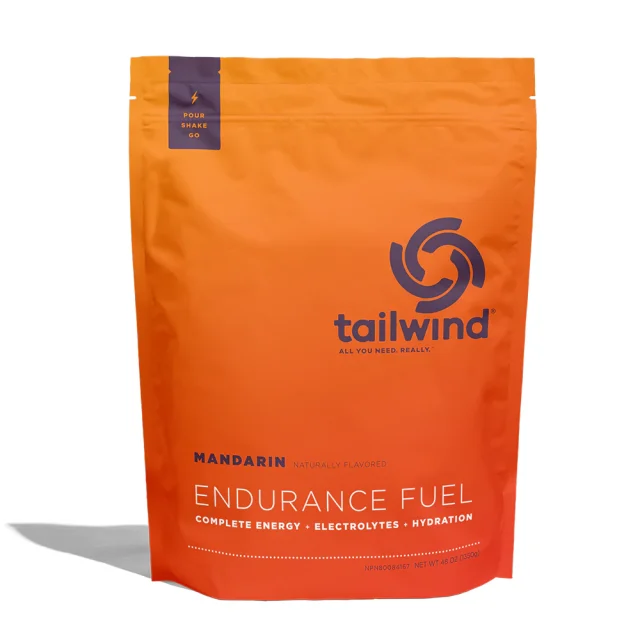
I definitely have a propensity to bonk kind of easily due to low blood pressure, and you can ask anyone who rides with me how miserable it can be when I do plunge into bonk-hell. I also have a hard time eating on the bike, so for rides such as this 100-mile one, I knew I would need to find an efficient and easy way to down some calories.
Tailwind’s Endurance Fuel is a drink mix that is composed of electrolytes and carbohydrates (dextrose and sucrose) to both hydrate and fuel during longer activities. These carbs are quick to digest and easy on the gut, which is huge; plus, by adding these calories to water, it makes it easier to hydrate. While it wasn’t crazy hot out on the White Rim (max temperature was around 80°F), I knew I had to stay hydrated and I could tell I was losing a lot of salt / electrolytes. I supplemented about ⅓ of my total calories with Tailwind Endurance Fuel, and it was a huge factor in keeping me going throughout the day. I could pretty quickly sense a difference in energy after every time I consumed it.
From an efficiency and packability standpoint, it’s pretty great to be able to pack a ton of calories in a small Ziploc bag. For reference, each scoop of Tailwind is 200 calories. I brought about 6 scoops, which was 1,200 drinkable calories, and it all packed down smaller than a bike tube. In cases such as this, where I knew I was going to be moving for more than eight hours, it’s hard for me to imagine how I would have stayed both fueled and hydrated without this drink mix. It’s also worth stating that I enjoy most of the flavors, and they are pretty refreshing / easy to down even when it’s really hot outside, or you’re just feeling kind of crappy.
So, on behalf of my partner Zach — who didn’t have to witness a bonk — and I, thanks to Tailwind Endurance Fuel. And for anyone looking for an easy way to keep the calories coming during activity, I would definitely recommend checking it out.
Prana Vaha Straight Pant
MSRP: $95
Size Tested: 32
Drew: Working for Blister, I’ve gotten to enjoy the benefits of WFH (Work From Home). What I didn’t realize is that I would need a wardrobe upgrade as part of this. My jeans and flannels mostly remain in my closet these days, replaced by things like Patagonia’s fleece Micro D Pullover and Prana’s Vaha Straight Pant. But, like many outdoor lovers out there, if I have the option to buy a piece of clothing that can be functional as well as comfortable (and fashionable etc., etc.), I’ll bite.

So I went for the Vaha Straight Pant knowing that Prana makes multivalent clothes for yoga, climbing, and lounging, among other applications. Firstly, I appreciate the use of recycled polyester and less water-intensive hemp. And those materials have the secondary benefit of being stretchy, comfortable, and durable — they’ve withstood a lot of typing at home, midday downward dogs, and me dragging myself up pitches of rock.
A wide elastic waistband and pockets (thank god I don’t have to change pants just for the sake of putting my wallet and keys in pockets whenever I leave the house!) round out the design touches, and mean I don’t often feel the need to change clothes.
A final note on sizing: I will say, the images on Prana’s website show a pretty wide discrepancy of fits: in some of the shots, the pants look to be cut above the ankles, while in others, they’re pretty long. I’m pretty much always a 32 x 32, and mine fit on the longer side, though they do maintain a rolled cuff well. Otherwise, they fit as Prana suggests: slim up top and straight and wide below the knee, which enables comfortable movement when climbing or doing yoga.

David – what water bottle/cage are you using for your G1?
It’s the Jank Components beer holder. It *just* barely fits, with a little bracket I made to tie it into the cable routing bosses.
https://jankcomponents.com/products/jank-beer-cage-beer-can-holder-for-bikes
sweet! thats awesome, I’m going to grab one. Also really looking forward to your full review of the new dorado, especially as compared to something like the mezzer. I’m thinking of putting a new fork onto my G1 and both those options really appeal.
Thank you for your honest reviews, IMHO your one of the best bike reviewers out there.
Pants / trousers with stretch…. is it just me or do they collect stains more easily and are harder to get rid of those same stains compared to 100% cotton jeans?
David – is the rear gear cable internally routed on the G1 chainstay or have you just stuck the VHS Tape over the top of it and sandwiched it? If so does it look to worm ok? Just wondering as I been looking at it for my sons bike which is externally routed and have been pondering on the best approach to cable routing!
I sandwiched a piece of plastic tubing under the VHS tape so that I could run the housing through that, and replace it without tearing the tape up. Works great.